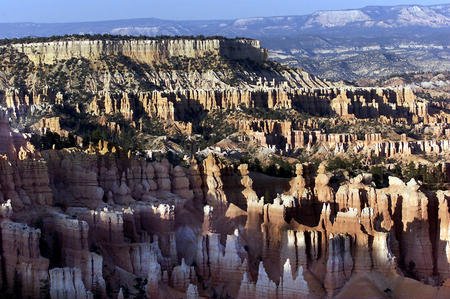BRYCE CANYON, Utah, July 21 (UPI) -- Sandstone arches, alcoves and pillars are scattered across the globe, monuments to nature's strange beauty -- odd, gravity-defying shapes carved by the wind and rain. Or so we thought.
A new study suggests these spontaneous stone structures are not exactly carved by the whims of erosion. Although wind and water perform the grunt work -- blowing abrasive sheets of sand and water droplets against the rock, loosening and carrying away the weaker pieces of sediment -- it's the rock's internal stresses and structure that determine these formations' magnificent shapes.















